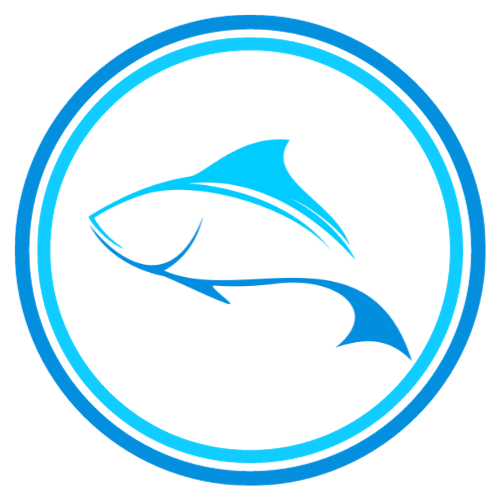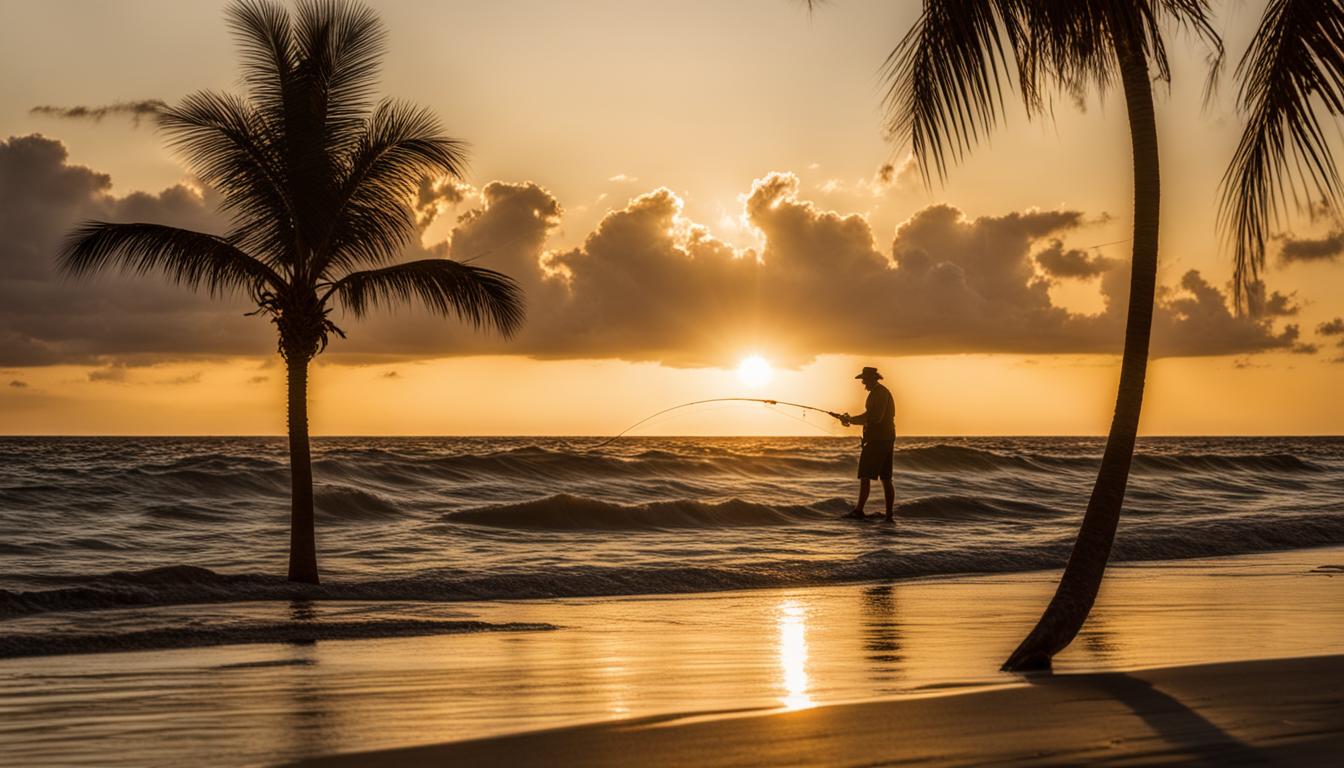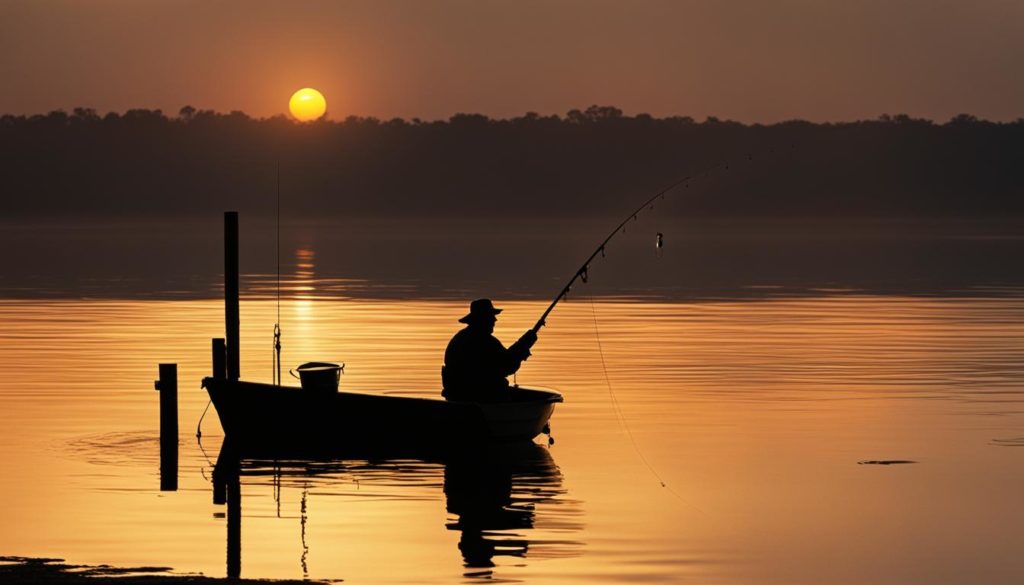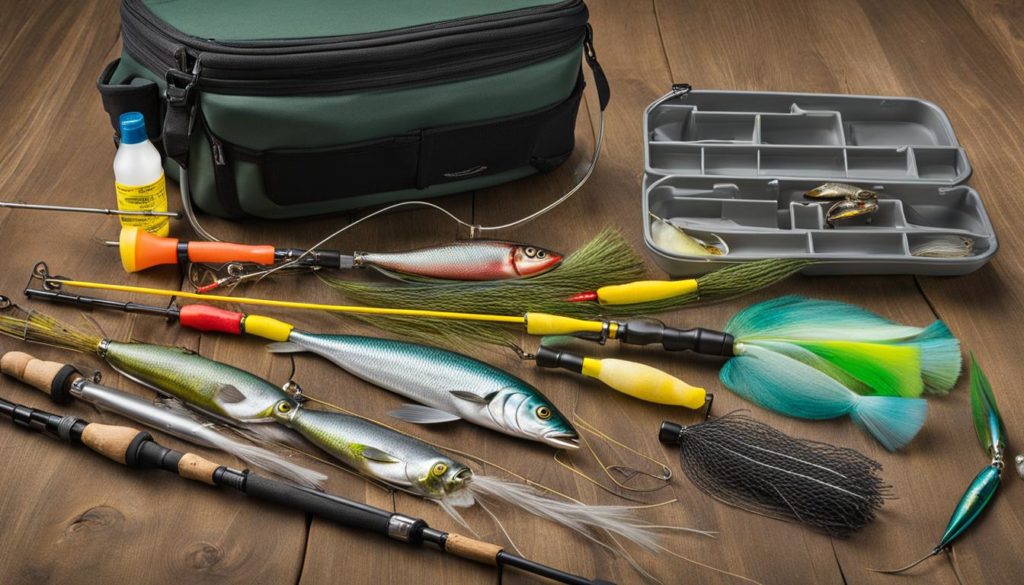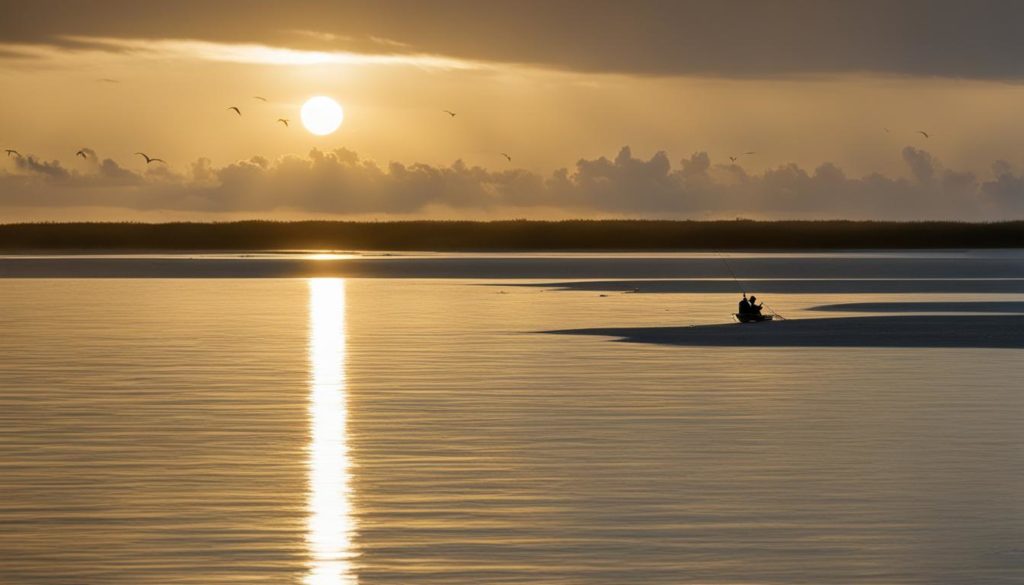Are you an avid angler looking to reel in some flounder in the beautiful waters of Florida? Look no further! In this article, we will provide you with expert tips and techniques to help you catch flounder successfully. Whether you prefer fishing from shore or venturing out on a boat, we’ve got you covered. Let’s dive in and discover the secrets of flounder fishing in Florida!
Key Takeaways:
- Flounder fishing in Florida is best during the fall season when they are gearing up to spawn.
- Flounder can be found near structure and ambush points such as jetties, deep docks, grass lines, oyster bars, and sandbars around the creeks.
- Live baits like finger mullet and mud minnows are recommended for flounder fishing, and using a swingstyle jig or a Carolina rig with a kahle hook can be highly effective.
- Flounder have a unique biting behavior, so it is crucial to let them eat the bait before setting the hook.
- Following the flounder fishing regulations set by the Florida Fish and Wildlife Conservation Commission is essential for sustainable fishing practices.
Understanding Flounder Behavior and Characteristics
Flounder are fascinating bottom-dwelling fish that exhibit unique behavior and possess distinct characteristics. In order to effectively catch flounder in Florida, it is crucial to understand their habits and preferences. Flounder are highly predatory and tend to hide in sandy or muddy areas, with only their eyes visible. Their small eyes are instrumental in locating and capturing their prey. Flounder have a diverse diet, which includes shrimp, crabs, smaller flounder, and baitfish. This varied diet makes them opportunistic feeders, always on the lookout for an easy meal.
When it comes to locating flounder in Florida, certain factors should be taken into consideration. Flounder can be found in various locations, from the northern region to the southern coast. They are often found near structure such as jetties, creeks, channels, and around docks and rocks. Flounder prefer areas with good current flow, as it helps to bring food to them. Their preference for hiding near structure is due to the ambush points it provides to surprise their prey. Understanding these habitats and locations can greatly enhance your chances of encountering flounder during your fishing expeditions.
Equip yourself with the right flounder fishing gear to ensure a successful catch. Flounder are known for their hard-fighting nature, so it is important to have appropriate rods, reels, lines, and leaders that can withstand their strength. The gear should offer sufficient sensitivity to detect subtle bites and bites from flounder, as they tend to bite and hold on to their prey before fully consuming it. By using suitable gear, you can effectively handle the unique characteristics of flounder and increase your chances of a successful catch.
| Flounder Behavior and Characteristics | |
|---|---|
| Diet | Shrimp, crabs, smaller flounder, baitfish |
| Preferred Locations | Near jetties, creeks, channels, docks, rocks |
| Hiding Behavior | Camouflaged in sand or mud, with only eyes visible |
| Fighting Nature | Hard-fighting, strong fish |
Tips for Catching Flounder with Artificial Lures
When it comes to targeting flounder in Florida, using artificial lures can be a highly effective technique. There are several options available that have proven to be successful in enticing these bottom-dwelling predators. Bucktail jigs, spoons, curly tail grubs, and scented baits like Gulp! shrimp are all popular choices among flounder anglers.
To increase your chances of success, it’s important to choose lures that mimic the natural prey of the flounder and have vibration and flash to attract their attention. When using artificial lures, a slow and steady retrieval close to the bottom is recommended, as flounder are known to stay close to the sandy or muddy bottom. Experimenting with different lures, colors, and retrieve speeds can help you find what works best in different conditions and locations.
One effective technique when targeting flounder with artificial lures is to cast parallel to ledges or structure. These areas are often hotspots for flounder activity. By presenting your lure in these locations, you increase the chances of attracting flounder and enticing them to bite. Additionally, certain spots like jetties, creek bends, and areas with strong current flow are known to be productive flounder fishing hotspots in Florida.
Artificial Lure Options for Flounder Fishing
| Lure Type | Description |
|---|---|
| Bucktail Jigs | These jigs are effective in imitating small baitfish that flounder prey upon. They can be jigged along the bottom or retrieved slowly. |
| Spoons | Spoons with a fluttering action can mimic wounded baitfish, attracting the attention of flounder. They can be retrieved with a steady, slow motion. |
| Curly Tail Grubs | These soft plastic baits have a lifelike appearance and action in the water. They can be rigged on a jighead and retrieved slowly. |
| Scented Baits | Scented baits like Gulp! shrimp can be highly attractive to flounder. They can be used on a jighead or Carolina rig and retrieved slowly. |
Using artificial lures requires patience and experimentation, but it can be a rewarding and effective method for catching flounder in Florida. Just remember to match the lure to the natural prey of the flounder, present it in a natural manner, and be persistent in your retrieval technique. With the right approach and a bit of luck, you’ll increase your chances of landing that prized flounder!
Live Bait Techniques for Catching Flounder
When it comes to targeting flounder in Florida, using live bait can be a highly effective technique. By presenting natural and enticing baits, you can increase your chances of enticing these bottom-dwelling fish. Shrimp, crabs, smaller flounder, and various baitfish can all be used as live bait options.
One popular setup for fishing with live bait is the Carolina rig. This rig consists of a weight, swivel, leader, and hook combination. The rig can be adjusted based on the depth and current of the fishing spot, allowing you to effectively present the live bait. Another technique is free lining baits or using a float, which can keep the bait in the strike zone and attract actively feeding flounder.
When using live bait, it is important to match the size and type of bait to the target species. Flounder are known for their predatory nature, so keeping the bait lively and attractive is crucial. By using live bait techniques, you can increase your chances of success and have a rewarding flounder fishing experience in Florida’s waters.
Tips for Targeting Flounder in Florida
- Use live bait such as shrimp, crabs, smaller flounder, and baitfish.
- Consider using a Carolina rig for presenting live bait effectively.
- Try free lining baits or using a float to attract actively feeding flounder.
- Match the size and type of bait to the target species.
- Keep the live bait lively and attractive to increase your chances of success.
Strategies for Catching Flounder with Cut Bait
When it comes to targeting flounder in Florida, using cut bait can be a highly effective strategy. Cut bait refers to pieces of baitfish, such as mullet, herring, and sardines, that are cut into appropriate lengths. One of the main advantages of using cut bait is the strong scent it emits, which can attract flounder from a distance. To successfully catch flounder using cut bait, there are a few key strategies to keep in mind.
First, it’s important to choose the right type of cut bait. Opt for baitfish that are commonly found in the waters where you’ll be fishing, as this will increase the likelihood of attracting flounder. Make sure to cut the bait into pieces that are suitable for the size of the flounder you’re targeting.
When using cut bait, it’s recommended to use a knocker or Carolina rig. These rigs consist of a weight, a swivel, a leader, and a hook. The weight will help keep the bait at the desired depth, while the leader and hook will ensure proper presentation. Ensure that the weight is suitable for the current and depth of the fishing spot, and adjust it accordingly to achieve optimal results.
A slow and steady retrieve is typically the most effective technique when using cut bait. Flounder are bottom-dwelling fish, so keeping the bait close to the bottom will increase your chances of attracting their attention. Allow the flounder enough time to find and consume the bait before attempting to reel in your catch. Additionally, using a combination of cut bait and one live or artificial bait can increase the likelihood of enticing flounder to bite.
Table: Comparison of Cut Bait Options for Flounder Fishing
| Types of Cut Bait | Advantages | Disadvantages |
|---|---|---|
| Mullet | Strong scent, attracts flounder from a distance | Potential availability issues |
| Herring | Attractive scent, widely available | Can be challenging to handle and cut |
| Sardines | Easy to handle and cut, enticing scent | May require additional preparation |
Using cut bait is a proven method for targeting flounder in Florida’s waters. By selecting the right type of bait, using the appropriate rig, and employing a slow and steady retrieve, you can maximize your chances of reeling in a flounder trophy. Experiment with different cut bait options and techniques to find out what works best in different conditions and locations. Remember to be patient and allow the flounder enough time to find and consume the bait before setting the hook.
Targeting Flounder Around Structure
When it comes to catching flounder in Florida, understanding their behavior and habitat preferences is key. One effective strategy is targeting flounder around structure, such as docks, piers, rocks, and pilings. These areas provide ideal hiding spots for flounder, allowing them to easily ambush their prey. To increase your chances of success, it’s important to use slightly heavier tackle to avoid the risk of breaking lines.
When fishing around structure, patience and gentle reeling are crucial. Flounder often hold tight to the structure, so it’s important to entice them out before setting the hook. Pay attention to the first bite and maintain a slow, steady retrieve to give the flounder time to fully take the bait. Additionally, it’s worth noting that flounder often hold in groups. If you’ve caught one flounder in a particular area, it’s worth staying and continuing to fish, as there may be more to be caught.
Current breaks and eddies around structure are ideal casting spots for targeting flounder. Casting parallel to the structure and allowing your bait to drift with the current can increase your chances of attracting a bite. Remember, flounder are bottom-dwelling fish, so keeping your bait close to the bottom is important. By targeting flounder around structure, you can increase your chances of landing these prized fish.
Flounder Fishing Gear:
| Item | Recommended |
|---|---|
| Rod | Medium to medium-heavy power, 7 to 8 feet long |
| Reel | Spinning or baitcasting reel with a smooth drag system |
| Line | 10 to 20-pound test monofilament or braided line |
| Leader | 20 to 30-pound fluorocarbon leader |
| Hook | Kahle or circle hook in sizes 1/0 to 3/0 |
| Sinker | Egg or pyramid sinker to match the current |
Flounder Fishing Hotspots in Florida:
- Jetties
- Creeks
- Channels
Strategies for Catching Flounder on the Flats
If you’re looking to catch flounder in Florida, targeting them on the flats can be a rewarding experience. Flats are shallow areas with sandy or muddy bottoms where flounder like to hide and hunt for prey. To increase your chances of success, here are some strategies and techniques you can use:
- Focus on Potholes and Transitions: Flounder often congregate around potholes, which are small depressions on the flat’s surface. These potholes act as hiding spots and ambush points for flounder. Look for transitions in the bottom structure, where the flat meets a channel or a deeper area. These transitions create natural funnels for baitfish, attracting flounder.
- Wade Stealthily: When fishing on the flats, wading can give you a stealthy advantage. Moving quietly through the water allows you to get closer to the shallow spots where flounder hide. Take your time and be mindful of your movements to avoid spooking the fish.
- Slow and Steady Retrieve: Flounder are bottom-dwelling fish, so it’s important to keep your bait close to the bottom. Use a slow and steady retrieve to mimic the natural movement of their prey. Flounder have a keen eye for detail, so make sure your bait looks enticing and lifelike.
- Use Polarized Sunglasses: Polarized sunglasses can be a game-changer when targeting flounder on the flats. They help reduce glare and improve visibility, allowing you to spot flounder tracks or subtle movements in the water. This gives you an advantage in locating flounder and making accurate casts.
Remember, fishing on the flats can be a test of patience and observation. Keep an eye out for flounder tracks, small disturbances in the sand or mud that indicate the presence of these fish. By incorporating these strategies into your fishing approach, you’ll be well on your way to catching flounder on the flats in Florida.
Table: Flounder Fishing Hotspots on the Flats
| Location | Description |
|---|---|
| Mosquito Lagoon | A popular flats fishing destination with ample seagrass beds and potholes that attract flounder. |
| Indian River Lagoon | This vast lagoon system is known for its expansive flats and diverse fish species, including flounder. |
| Apalachicola Bay | The extensive flats of Apalachicola Bay provide excellent opportunities for targeting flounder. |
| Charlotte Harbor | With its labyrinth of flats, creeks, and channels, Charlotte Harbor is a prime location for flounder fishing. |
“Fishing the flats for flounder requires a keen eye, patience, and a steady hand. With the right approach and a bit of luck, you’ll have a great chance of hooking into these elusive fish.” – Capt. John Smith
Understanding Flounder Behavior and Characteristics
Flounder are unique bottom-dwelling fish with a highly predatory nature. They are adept at camouflaging themselves in sand or mud, hiding and ambushing their prey. Despite their small eyes, flounder rely on their keen vision to locate and capture their next meal. Their diet is diverse, consisting of shrimp, crabs, smaller flounder, and baitfish. Understanding the behavior and characteristics of flounder is essential for successful fishing.
When targeting flounder, it is important to consider their preferred locations. In Florida, flounder can be found in various areas such as jetties, creeks, channels, and around structure like docks and rocks. These structures provide hiding spots and ambush points for flounder to lie in wait for their prey. Proper flounder fishing gear, including rods, reels, lines, and leaders, should be selected to handle their strong and hard-fighting nature. Having the right equipment ensures a better chance of landing these elusive fish.
Flounder are unique bottom-dwelling fish with a highly predatory nature.
Flounder Locations in Florida
Flounder can be found in different locations throughout Florida, making it crucial to understand their preferences. Jetties, with their strong current flow, are popular hotspots for flounder. Creeks and channels are also favored areas, providing ample opportunities for flounder to feed. Additionally, flounder are often found around structure such as docks and rocks, where they can hide and ambush prey. By targeting these specific locations, anglers can increase their chances of encountering flounder.
Flounder Fishing Gear
Using the right flounder fishing gear is essential for a successful fishing experience. When it comes to rods, medium-action spinning rods are recommended for their versatility and strength. Reels should have a smooth drag system and be capable of holding sufficient line capacity. Braided lines are popular due to their strength and sensitivity, allowing anglers to detect subtle bites from flounder. Fluorocarbon leaders are ideal for their invisibility in the water, increasing the chances of fooling wary flounder. By equipping oneself with the appropriate gear, anglers can improve their chances of landing these prized fish.
Tips for Catching Flounder with Artificial Lures
If you prefer to use artificial lures when targeting flounder in Florida, there are a few key techniques you should keep in mind. Choosing the right lures is crucial for attracting their attention. Bucktail jigs, spoons, curly tail grubs, and scented baits like Gulp! shrimp are popular options among experienced anglers. These lures mimic the natural prey of flounder and have the necessary vibration and flash to entice these bottom-dwelling fish.
When using artificial lures, it’s important to retrieve them in a slow and steady manner. Flounder are known for their unique biting behavior and tend to bite and hold on to their prey before fully swallowing it. Reeling too quickly can result in missed bites, so take your time and keep the line tight when you feel a bite. Experiment with different colors, sizes, and retrieve speeds to determine what works best in different conditions and locations.
Having the right flounder fishing gear is essential for effectively using artificial lures. Ensure you have a suitable rod, reel, line, and leader that can handle the strength and hard-fighting nature of flounder. By mastering the techniques of using artificial lures and selecting the right gear, you can increase your chances of success when targeting flounder in the waters of Florida.
Pros and Cons of Using Artificial Lures for Flounder Fishing
| Pros | Cons |
|---|---|
| Can be highly effective in attracting flounder | Requires practice and skill to master |
| Offers a wide variety of options to mimic natural prey | May not work as well in certain weather or water conditions |
| Allows for precise targeting of specific areas | Can be more expensive than using live or cut bait |
“Using artificial lures for flounder fishing adds an element of challenge and excitement to the sport. The ability to fool these cunning fish with a well-presented lure is incredibly rewarding.”
Remember to always check the fishing regulations and guidelines set by the Florida Fish and Wildlife Conservation Commission before heading out. By combining the right artificial lures with proper techniques and gear, you’ll be on your way to a successful flounder fishing adventure in the beautiful waters of Florida.
Live Bait Techniques for Catching Flounder
When it comes to catching flounder in Florida, using live bait can be a highly effective technique. Live bait such as shrimp, crabs, smaller flounder, and various baitfish can entice flounder to bite. The key to success with live bait is presenting it in a natural and enticing manner. One popular rig for fishing with live bait is the Carolina rig, which consists of a weight, swivel, leader, and hook combination. This rig allows the bait to be presented at different depths and currents, increasing the chances of attracting flounder.
Another technique for using live bait is free lining with a float. This allows the bait to suspend in the water column and appear more natural to the flounder. It can be particularly effective when targeting actively feeding flounder. It’s important to match the size and type of bait to the target species, as well as ensure that the bait remains lively and attractive.
Table: Recommended Live Bait for Flounder Fishing
| Bait | Key Features | Best Time to Use |
|---|---|---|
| Shrimp | Highly attractive scent | Throughout the year |
| Crabs | Natural prey for flounder | Spring and summer |
| Smaller flounder | Provokes territorial response | Summer and fall |
| Baitfish (mullet, sardines, etc.) | Attracts predatory instinct | Year-round, depending on availability |
Familiarize yourself with the flounder fishing hotspots in Florida, such as jetties, creek bends, and channels. These locations provide the ideal habitat for flounder and increase your chances of success when using live bait. Remember to follow all regulations set by the Florida Fish and Wildlife Conservation Commission to ensure sustainable fishing practices. With the right techniques, gear, and knowledge of the best live bait to use, you’ll be well on your way to catching flounder in Florida.
Conclusion
Mastering the art of catching flounder in Florida requires understanding their behavior, knowing the best fishing techniques, and having the right gear. If you want to learn how to catch flounder in Florida successfully, it is important to fish with live baits like finger mullet and mud minnows, ensuring they are alive and frisky. Using a swingstyle jig or a Carolina rig with a kahle hook is recommended for flounder fishing. Patience is key when waiting for the flounder to fully swallow the bait. When using artificial lures, choose ones that have vibration and flash to attract flounder in shallow or deeper areas.
Flounder are bottom-dwelling fish that hide in sand or mud and rely on their vision to find prey. They can be found in various locations such as jetties, creeks, channels, and around structure like docks and rocks. Live bait, artificial lures, and cut bait are all effective options for targeting flounder. It is important to match the bait to the target species, present it in a natural manner, and be patient when waiting for a bite.
Remember to follow the fishing regulations and guidelines set by the Florida Fish and Wildlife Conservation Commission to ensure sustainable fishing practices. By understanding the behavior and characteristics of flounder, utilizing the right fishing techniques, and having the appropriate gear, you can increase your chances of having a fulfilling and successful flounder fishing experience in Florida’s waters.
FAQ
When is the best time to catch flounder in Florida?
Flounder fishing is best during the fall season when they are gearing up to spawn.
Where can I find flounder in Florida?
Flounder can be found near structure and ambush points such as jetties, deep docks, grass lines, oyster bars, and sandbars around creeks.
What are the recommended bait and rigs for flounder fishing?
Live baits like finger mullet and mud minnows, used with a swing-style jig or a Carolina rig with a kahle hook, are recommended for flounder fishing.
What is the behavior of flounder when biting?
Flounder have a unique biting behavior and it is important to let them eat the bait before setting the hook. Patience is key.
Can I use artificial lures for flounder fishing?
Yes, artificial lures with vibration and flash can be effective for attracting flounder in shallow or deeper areas.
What are the new flounder regulations in Florida?
The Florida Fish and Wildlife Conservation Commission has set new regulations including a minimum size limit, reduced daily bag limit, and closed season for flounder.
What is the diet of flounder?
Flounder have a varied diet consisting of shrimp, crabs, smaller flounder, and baitfish.
What factors should I consider when targeting flounder?
Factors such as tide, weather, water temperature, and location should be considered when targeting flounder.
Where can I find flounder hotspots in Florida?
Flounder hotspots in Florida include jetties, creek bends, and locations with strong current flow.
What are the recommended fishing techniques for flounder on the flats?
Slow and steady retrieval close to the bottom is recommended when targeting flounder on the flats.
What gear should I use for flounder fishing?
Proper flounder fishing gear, including rods, reels, lines, and leaders, should be used to handle the strong and hard-fighting nature of flounder.
